“Bizarre happenstance, a weird coincidence”
–Bush spokeswoman Shirley M. Green, March 31, 1981
cui prodest scelus, is fecit
–Seneca, first century AD
For Bush, the vice presidency was not an end in itself, but merely another stage in the ascent towards the pinnacle of the federal bureaucracy, the White House. With the help of his Brown Brothers, Harriman/Skull and Bones network, Bush had now reached the point where but a single human life stood between him and the presidency.
Ronald Reagan was 70 years old when he took office, the oldest man ever to be inaugurated as president. His mind wandered; long fits of slumber crept over his cognitive faculties. On some days he may have kept bankers’ hours with his papers and briefing books and meetings in the Oval Office, but he needed a long nap most afternoons and became distraught if he could not have one. His custom was to delegate all administrative decisions to the cabinet members, to the executive departments and agencies. Policy questions were delegated to the White House staff, who prepared the options and then guided Reagan’s decisions among the pre-defined options. This was the staff that composed not just Reagan’s speeches, but the script of his entire life: for normally every word that Reagan spoke in meetings and conferences, every line down to and including “Good morning, Senator,” every word was typed on three by five file cards from which the Reagan would read.
Foreign leaders like the cunning Francois Mitterrand professed shock over Reagan’s refusal to depart from the vaguest generalities in response to impromptu questions; Mitterrand had attempted to invite Reagan to a private tete-a-tete, but he had been overruled by Reagan’s staff. French Foreign Minister Cheysson lamented that the exchanges had been “shallow.” When asked for decisions in the National Security Council, Reagan would often respond with his favorite story about black welfare mothers chiselling the government out of money; aides would then interpret that as approval of the options they were putting forward.
But sometimes Reagan was capable of lucudity, and even of inspired greatness, in the way a thunderstorm can momentarily illuminate a darkling countryside; these moments often involved direct personal impressions or feelings. Reagan’s instinctive contempt for Bush after the Nashua Telegraph debate was one of his better moments. Reagan’s greatest moment of conceptual clarity came in his televsion speech of March 23, 1983 on the Strategic Defense Initiative. The idea of defending against nuclear missles, of not accepting mutually assured destruction, and of using such a program as a science driver for rapid technological renewal was something Reagan permanently grasped and held onto even under intense pressure in Hofdie House in Reykjavik in October, 1986 during the summit with Gorbachov. In addition, during the early years of Reagan’s first term, there were enough Reaganite loyalists, typified by William Clark, in the administration to cause much trouble for the Bushmen. But as the years went by, the few men like Clark that Reagan had brought with him from California would be ground up by endless bureaucratic warfare, and their replacements, like McFarlane at the NSC, would come more and more from the ranks of the Kissingerians. Unfortunately Reagan never developed a plan to make the SDI an irreversible political and budgetary reality, and this critical shortcoming grew out of Reagan’s failed economic policies, which never substantially departed from Carter’s.
But apart from rare moments like the SDI, Reagan tended to drift. Don Regan called it “the guesswork presidency;” for Al Haig, frustrated in his own lust for power, it was government by an all-powerful staff. Who were the staff? At first it was thought that Reagan would take most of his advice from his old friend Edwin Meese, his close associate from California days, loyal and devoted to Reagan, and sporting his Adam Smith tie. But it was soon evident that the White House was really run by a troika: Meese, Michael Deaver, and James Baker III, Bush’s man.
Deaver’s specialty was demagogic image-mongering. Deaver’s images were made for television; they were edifying symbols without content, and took advantage of the fact that Reagan so perfectly embodied the national ideology of the Americans that most of them could not help liking him; he was the ideal figurehead. Deaver had another important job, for Reagan, as everybody knows, was uxorious: Nancy Reagan, the narrow-minded, vain, petty starlet was the one the president called “Mommy.” Nancy was the mamba of the White House, the social-climbing arriviste of capital society, an evil-tongued presence on a thousand telephones a week complaining about the indignities she thought she was subjected to, always obsessed by public opinion and making Ronnie look good in the most ephemeral short term. Deaver was like a eunuch of the Topkapi harem, responsible for managing the humors of the sultan’s leading odalisque.
Nancy was a potential problem for Bush; she did not like him; perhaps she sensed that he was organizing a putsch against Ronnie. “He’s a nice man and very capable. But he’s no Ronnie. He comes across as a ‘wimp.’I don’t think he can make it. He’s a nice man, but his image is against him. It isn’t macho enough.” [fn 1] So spoke Nancy Reagan to her astrologer, Joan Quigley, in the White House in April, 1985. That could have been a very serious problem indeed, and that was where James Baker came in.
If Deaver played the eunuch for Nancy, Baker was to impersonate her squire and champion. In Nancy’s provincial view, Baker was a sartorially elegant, old money aristocrat and charmeur. His assignment for the Bush machine was to ingratiate himself with the adolescent old lady with flattery and schmooze, and Nancy appears to have been entranced by Baker’s Princeton Ivy Club veneer –those ties! Those suits!
Deaver gravitated by instinct towards Baker; Deaver tells us in his memoirs that he was a supporter of Bush for vice president at the Detroit convention. This meant that Baker-Deaver became the dominant force over Ron and over Nancy; George Bush, in other words, already had an edge in the bureaucratic infighting.
Thus it was that White House press secretary James Brady could say in early March, 1981: “Bush is functioning much like a co-president. George is involved in all the national security stuff because of his special background as CIA director. All the budget working groups he was there, the economic working groups, the Cabinet meetings. He is included in almost all the meetings.” [fn 2]
Even before the inauguration, James Baker had told a group of experienced Republican political operatives in Houston that Reagan was only interested in the public and symbolic aspects of the presidency, and that he had asked the Bush people to come in and take over the actual running of day to day government affairs. That was, of course, the self-interested view of the Bushmen. There were reports in the Bush camp that Reagan would quit after a year or two and let Bush entrench himself as the incumbent before the 1984 election. Later, after 1984, there were even more frequent rumors that Reagan would resign in favor of Bush. It did not happen, showing that Reagan was not the pushover that the Bushmen liked to pretend.
During the first months of the Reagan Administration, Bush found himself locked in a power struggle with Gen. Alexander Haig, whom Reagan had appointed to be Secretary of State. Haig was a real threat to the Bushmen. Haig was first of all a Kissinger clone with credentials to rival Bush’s own; Haig had worked on Henry’s staff during the Nixon years; he had been the White House chief of staff who had eased Nixon out the door with no trial, but with an imminent pardon. Haig’s gifts of intrigue were considerable. And Haig was just as devoted to the Zionist neoconservatives as Bush was, with powerful ties in the direction of the Anti-Defamation League. It was, althogether, a challenge not to be taken lightly. Haig thought that he had been a rival to Bush for the vice-presidency at the Detroit convention, and perhaps he had been.
Inexorably, the Brown Brothers, Harriman/Skull and Bones networks went into action against Haig. The idea was to paint him as a power-hungry megalomaniac bent on dominating the administration of the weak figurehead Reagan. This would then be supplemented by a vicious campaign of leaking by Baker and Deaver designed to play Reagan against Haig and vice-versa, until the rival to Bush could be eliminated.
The wrecking operation against Haig started during his confirmation hearings, during which he had to answer more questions about Watergate than Bush had faced in 1975, when the facts were much more recent. Senator Tsongas was wired in: Tsongas, motivating his negative vote against Haig’s confirmation, told the nominee: “You are going to dominate this administration, if I may say so. You are by far the strongest personality that’s going to be in there.” [fn 3]
Three weeks into the new administration, Haig concluded that “someone in the White House staff was attempting to communicate with me through the press,” by a process of constant leakage, including leakage of the contents of secret diplomatic papers. Haig protested to Meese, NSC chief Richard Allen, Baker, and Bush. Shortly thereafter, Haig noted that “Baker’s messengers sent rumors of my imminent departure or dismissal murmuring through the press.” Soon “‘a senior presidential aide’ was quoted in a syndicated column as saying, ‘We will get this man [Haig] under control.’” [fn 4] It took a long time for Baker and Bush to drive Haig out of the administration.
Ultimately it was Haig’s attempted mediation of the Malvinas crisis in April, 1982 that weakened Haig to the point that he could be finished off. His fall was specifically determined by his action in giving Ariel Sharon a secret carte blanche for the Israeli government to invade Lebanon, including the city of Beirut. Reagan was justifiably enraged. Shortly before his ouster, Haig got a report of a White House meeting during which Baker was reported to have said, “Haig is going to go, and quickly, and we are going to make it happen.” [fn 5]
Haig’s principal bureaucratic ploy during the first weeks of the Reagan administration was his submission to Reagan on the day of his inauguration of a draft executive order to organize the National Security Counbcil and interagency tasks forces, including the crisis staffs, according to Haig’s wishes. Haig refers to this document as National Security Decision Directive 1 (NSDD 1), and laments that it was never signed in its original form, and that no comparable directive for structuring the NSC interagency groups was signed for over a year. Ultimately a document called NSDD 2 would be signed, formalizing the establishment of a Special Situation Group (SSG) crisis management staff chaired by Bush. Haig’s draft would have made the Secretary of State the Chairman of the SSG crisis staff in conformity with Haig’s demand to be recognized as Reagan’s “vicar of foreign policy.” This was unacceptable to Bush, who made sure with the help of Baker and probably also Deaver that Haig’s draft of NSDD 1 would never be signed.
Haig writes about this bureaucratic struggle as the battle for the IG’s (Interagency Groups) and SIG’s (Special or Senior Interagency Groups), generally populated by undersecretaries, assistant secretaries, and deputy assistant secretaries within the NSC framework. As Haig points out, these Kissingerian structures are the locus of much real power, especially under a weak president like Reagan. Haig notes that “in organizational terms, the key to the system is the substructure of SIG’s and IG’s in which the fundamentals of policy (domestic and foreign) are decided. On instructions from the President, the IG’s (as I will call the whole lot, for the sake of convenience), can summon up all the human and informational resources of the federal government, study specific issues, and develop policy options and recommendations. [...] IG chairmanships are parceled out to State and other departments and agencies according to their interests and their influence. As Kissinger, that canny veteran of marches and countermarches in the faculty of Harvard University, recognized, he who controls the key IG’s controls the flow of options to the President and, therefore, to a degree, controls policy.” [fn 6]
The struggle between Haig and Bush culminated towards the end of Reagan’s first hundred days in office. Haig was chafing because the White House staff, meaning Baker, was denying him acess to the president. Haig’s NSDD 1 had still not been signed. The, on Sunday, March 22, Haig’s attention was called to an elaborate leak to reporter Martin Schram that had appeared that day in the Washington Post under the headline “WHITE HOUSE REVAMPS TOP POLICY ROLES; Bush to Head Crisis Management.” Haig’s attention was drawn to the following paragraphs:
Partly in an effort to bring harmony to the Reagan high command, it has been decided that Vice President George Bush will be placed in charge of a new structure for national security crisis management, according to senior presidential assistants. This assignment will amount to an unprecedented role for a vice president in modern times. In the Carter administration, the crisis management structure was chaired by Zbigniew Brzezinski, the national security adviser. [...]
On a broader, policy-making level, senior White House officials were unhappy with what they felt to be ill-timed and ill-considered actions by Secretary of State Alexander M. Haig Jr. that placed the brightest spotlight on El Salvador at a time when the administration was trying to focus maximum attention on Reagan’s economic proposals. [...]
Bush’s stature, by virtue of job title and experience, was cited as the reason that he was chosen to chair meetings in the Situation Room in time of crisis. Principal officials involved in crisis management will be the secretaries of state and defense, the Central Intelligence Agency director, the national security adviser, Meese, and Baker, officials said, adding that the structure has not been fully devised nor the presidential directive written.
Reagan officials emphasized that Bush, a former director of the CIA and former United Nations Ambassador, would be able to preserve White House control over crisis management without irritating Haig, who they stressed was probably the most experienced and able of all other officials who could serve in that function.
“The reason for this [choice of Bush] is that the secretary of state might wish he were chairing the crisis management structure,” said one Reagan official, “but it is pretty hard to argue with the vice president being in charge.” [fn 7]
Lower down on the page was a smaller article entitled “Anatomy of a Washington Rumor,” to which we will return.
Haig says that he called Ed Meese at the White House to check the truth of this report, and that Meese replied that there was no truth to it. Haig went to see Reagan at the White House. Reagan was concerned about the leak, and reassured Haig: “I want you to know that the story in the Post is a fabrication. It means that George would sit in for me in the NSC in my absence, and that’s all it means. It doesn’t affect your authority in any way.” Haig also says that he received a further call from Reagan assuring him that his authority was not to be diminished in the slightest.
But later the same afternoon, White House press secretary James Brady read the following statement to the press:
I am confirming today the President’s decision to have the Vice President chair the Administration’s “crisis management” team, as a part of the National Security Council system….President Reagan’s choice of the Vice President was guided in large measure by the fact that management of crises has traditionally–and appropriately– been done in the White House. [fn 8]
Haig says he then drew up his letter of resignation, but hesitated to sign it. He called Bush to complain: “The American people can’t be served by this. It’s an impossible situation for you and me to be in. Of course, you chair the NSC in the President’s absence. We didn’t need to say it. This is all mischief. Why the hell did they do this without discussing it with me.” Haig went on: “I have been dealt with duplicitiously, George. The President has been used. I need a public reaffirmation of my role or I can’t stay here.” Can it be that Haig was so naive that he did not realize that Bush was his ruthless rival and the source of many of his problems? Haig undoubtedly knew, but chose not to say so in memoirs written after he had been defeated. For Haig also knew that Bush was vindictive. Haig does note that he was convinced that Meese was not part of the cabal out to get him. Haig had further conversations with Reagan during these days, which often seemed to have cleared up the confusion, but which in retrospect were never conclusive. In the meantime, George Bush had seized control of the Special Situation Group, which would take control of the Executive Branch in time of crisis or national emergency. It was a superb starting point for a coup d’etat.
The other article in the Washington Post of Sunday, March 22 was also a harbinger of things soon to come. This piece was entitled “Anatomy of a Washington Rumor,” and the rumor it traced was that “Vice President George Bush had been nicked by a bullet in a predawn shooting outside a townhouse somewhere on Capitol Hill.” According to this story, the source of the rumor in question was a young woman artist living on Capitol Hill who had rushed into the street on the evening of February 22 when she heard the sound of a traffic accident near her home. There she was met a by a police officer whom she had met previously, on the occasion of the murder a few weeks earlier of a young Supreme Court Librarian in the same spot. According to the woman artist, the policeman told her: “The vice president was shot today.” When the woman artist tried to check on this story with the news media, the article alleged, the rumor took on a life of its own and became an inchoate news story, with Jack Anderson and others trying to verify it.
Vice President Bush was reportedly very angry when he was told about the rumor: “Peter Teeley, the vice president’s press secretary, told Bush of the inquiries. The vice president was incredulous and was as angry as Teeley had ever seen him. ‘Jesus, this is the craziest thing I have ever heard,’ he said. Bush though the whole thing was silly. ‘You should call Barbara,’ he told Teeley, ‘ and let her know what this is all about.” Why would Bush be so angry about a spurious report?
As reporters dug deeper into the alleged shooting, one asked a Secret Service contact if there had been any recent shooting incidents monitored by his agency. “The answer came back. On March 8, as a motorcade drove west on Canal Road, officers had heard a ‘popping sound’ from a ‘steep, rocky cliff’ on the Virginia side of the Potomac River. But it had been President Reagan’s motorcade, not Bush’s. And the noises never proved to be gunfire.” [fn 9] Had there been an attempt to assassinate Reagan, or to intimidate him? In any case Senator Howard Baker, the GOP majority leader at that time, was overheard making jokes about the allegedly discredited Rumor at a weekend party, and this was duly noted in the Washinton Post of March 25.
In the midst of the Bush-Baker cabal’s relentless drive to seize control over the Reagan administration, John Warnock Hinckley Jr. carried out his attempt to assassinate President Reagan on the afternoon of March 30, 1981. George Bush was visiting Texas that day. Bush was flying from Fort Worth to Austin in his Air Force Two Boeing 707. In Fort Worth, Bush had unveiled a plaque at the Hyatt Regency Hotel, the old Hotel Texas, designating it as a national historic site. This was the hotel, coincidentally, in which John F. Kennedy had spent the last night of his life, before going on to Dallas the next day, November 22, 1963. Here was a sinister symbolism!
In Austin Bush was scheduled to deliver an address to a joint session of the Texas state legislature. It was Al Haig who called Bush in the clear and told him that the President had been shot, while forwarding the details of Reagan’s condition, insofar as they were known, by scrambler as a classified message. Haig was in touch with James Baker III, who was close to Reagan at George Washington University hospital. Bush’s man in the White House situation room was Admiral Dan Murphy, who was standing right next to Haig. Bush agreed with Haig’s estimate that he ought to return to Washington at once. But first his plane needed to be refueled, so it landed at Carswell Air Force Base near Austin.
Refueling took about forty minutes; during this time Bush talked on board the plane with Texas Governor William Clements, his wife, Rita, and Texas Secretary of State George Strake. Texas Congressman Jim Wright was also travelling on Bush’s plane that day, as were Congressmen Bill Archer of Houston and Jim Collins of Dallas. Bush’s top aide Chase Untermeyer was also with the party on Air Force Two. [fn 10]
Bush says that his flight from Carswell to Andrews Air Force Base near Washington took about two and one half hours, and that he arrived at Andrews at abouit 6:40 PM. Bush says he was told by Ed Meese that the operation to remove the bullet that had struck Reagan was a success, and that the president was likely to survive. Bush’s customary procedure was to land at Andrews and then take a helicopter to the vice presidential residence, the Naval Observatory on Massachusetts Avenue. His aides Ed Pollard and John Matheny suggested that he would save time by going by helicopter directly to the White House south lawn, where he could arrive in time to be shown on the 7 PM Eastern time evening news broadcasts. Bush makes much oif the fact that he refused to do this, allegeedly on the symbolic grounds that “Only the President lands on the south lawn.”
Back at the White House, the principal cabinet officers had assembled in the situation room and had been running a crisis management committee during the afternoon. Haig says he was at first adamant that a conspiracy, if discovered, should be ruthlessly exposed: “It was essential that we get the facts and publish them quickly. Rumor must not be allowed to breed on this tragedy. Remembering the aftermath of the Kennedy assassination, I said to Woody Goldberg, ‘No matter what the truth is about this shooting, the American people must know it.” [fn 11] But the truth has never been established.
Defense Secretary Caspar Weinberger’s memoir of that afternoon reminds us of two highly relevant facts. The first is that a “NORAD [North American Air Defense Command] exercise with a simulated incoming missle attack had been planned for the next day.” Weinberger agreed with General David Jones, the chiarman of the Joint Chiefs of Staff, that this exercise should be cancelled. [fn 12]
Weinberger also recalls that the group in the Situation Room was informed by James Baker that “there had been a FEMA [Federal Emergency Management Administration] exercise scheduled for the next day on presidential succession, with the general title ‘Nine Lives.’ By an immediate consensus, it was agreed that exercise should also be cancelled.” [fn 13]
As Weinberger further recalls, “at almost exactly 7:00, the Vice President came to the Situation Room and very calmly assumed the chair at the head of the table.” [fn 14] According to Weinberger, the first item discussed was the need for someonme to sign the Dairy Price Support Bill the next day so as to reassure the public. Bush asked Weinberger for a report on the status of US forces, which Weinberger furnished.
Another eyewitness of these transactions was Don Regan, whom the Tower Board later made the fall-guy for Bush’s Iran-contra escapades. Regan records that “the Vice President arrived with Ed Meese, who had met him when he landed to fill him in on the details. George asked for a condition report: 1) on the President; 2) on the other wounded; 3) on the assailant; 4) on the international scene. [...] After the reports were given and it was determined that there were no international complications and no domestic conspiracy, it was decided that the US government would carry on business as usual. The Vice President would go on TV from the White House to reassure the nation and to demonstrate that he was in charge.” [fn 15]
As Weinberger recounts the same moments: “[Attorney General Bill French Smith] then reported that all FBI reports concurred with the information I had received; that the shooting was a completely isolated incident and that the assassin, John Hinckley, with a previous record in Nashville, seemed to be a ‘Bremmer’ type, a reference to the attempted assassin of George Wallace.” [fn 16]
Those who were not watching carefully here may have missed the fact that just a few minutes after George Bush had walked into the room, he had presided over the sweeping under the rug of the decisive question regarding Hinckley and his actions: was Hinckley a part of a conspiracy, domestic or international? Not more than five hours after the attempt to kill Reagan, on the basis of the most fragmentary early reports, before Hinckley had been properly questioned, and before a full investigation had been carried out, a group of cabinet officers chaired by George Bush had ruled out a priori any conspiracy. Haig, whose memoirs talk most about the possibility of a conspiracy, does not seem to have objected to this incredible decision.
From that moment on, “no conspiracy” became the official doctrine of the US regime, for the moment a Bush regime, and the most massivew efforts were undertaken to stifle any suggestion to the contrary. The iron curtain came down on the truth about Hinckley.
What was the truth of the matter? The Roman common sense of Lucius Annaeus Seneca (who had seen so many of Nero’s intrigues, and who would eventually fall victim to one of them) would have dictated that the person who would have profited most from Reagan’s death be scrutinized as the prime suspect. That was obviously Bush, since Bush would have assumed the presidency if Reagan had succumbed to his wounds. The same idea was summed up by an eighth grade student at the Alice Deal Junior High School in Washington DC who told teachers on March 31: “It is a plot by Vice President Bush to get into power. If Bush becomes President, the CIA would be in charge of the country.” The pupils at this school had been asked for their views of the Hinckley assassination attempt of the previous day. [fn 17]
Curiously enough, press accounts emerging over the next few days provided a compelling prima facie case that there had been a conspiracy around the Hinckley attentat, and that the conspiracy had included members of Bush’s immediate family. Most of the overt facts were not disputed, but were actually confirmed by Bush and his son Neil.
On Tuesday, March 31 the Houston Post published a copyrighted story under the headline: “BUSH’S SON WAS TO DINE WITH SUSPECT’S BROTHER, by Arthur Wiese and Margarte Downing.” The lead paragraph read as follows:
Scott Hinckley, the brother of John Hinckley Jr., who is charged with shooting President Reagan and three others, was to have been a dinner guest Tuesday night at the home of Neil Bush, son of Vice President George Bush, The Houston Post has learned.
According to the article, Neil Bush had admitted on Monday, March 30 that he was personally acquainted with Scott Hinckley, having met with him on one occasion in the recent past. Neil Bush also stated that he knew the Hinckley family, and referred to large monetary contributions made by the Hinckleys to the Bush 1980 presidential campaign. Neil Bush and Scott Hinckley both lived in Denver at this time. Scott Hinckley was the vice president of Vanderbilt Energy Corporation, and Neil Bush was employed as a land man for Standard Oil of Indiana. John W. Hinckley Jr., the would-be assassin, lived on and off with his parents in Evergreen, Colorado, not far from Denver.
Neil Bush was reached for comment on Monday, March 30, and was asked if, in addition to Scott Hinckley, he also knew John W. Hinckley Jr., the would-be killer. “I have no idea,” said Neil Bush. “I don’t recognize any pictures of him. I just wish I could see a better picture of him.”
Sharon Bush, Neil’s wife, was also asked about her acquaintance with the Hinckley family. “I don’t even know the brother,” she replied, suggesting that Scott Hinckley was coming to dinner as the date of a woman whom Sharon did know. “From what I know and have heard, they [the Hinckleys] are a very nice family…and have given a lot of money to the Bush campaign. I understand he [John W. Hinckley Jr.] was just the renegade brother in the family. They must feel awful.”
It also proved necessary for Bush’s office to deny that the vice-president was familiar with the “Hinckley-Bush connection.” Bush’s press secretary, the British-born Peter Teeley, said when asked to comment: “I don’t know a damn thing about it. I was talking to someone earlier tonight, and I couldn’t even remember his [Hinckley's] name. All I know is what you’re telling me.” Teeley denied that Bush had revealed that he knew Hinckley or the Hinckley family when he first heard the assassin’s name; the vice president “made no mention of it whatsoever.” Bush, repeated Teeley, “certainly didn’t indicate anything like that.”
Chase Untermeyer of Bush’s staff, who had been with him throughout the day, put in that in his recollection Bush had not been told the assailant’s name through the time that Bush reached the Naval Observatory in Washington on his way to the White House.
On April 1, 1981, the Rocky Mountain News of Denver carried an account of a press conference given the previous day in Denver by Neil Bush. During most of the day on March 31, Neil Bush had refused to answer phone calls from the media, referring them to the vice presidential press office in Washington. But then he appeared in front of the Amoco Building at East 17th Avenue and Braodway in Denver, saying that he was willing to meet the media once, but then wanted to “leave it at that.” As it turned out, his wishes were to be scrupulously respected, at least until the Silverado Savings and Loan scandal got out of hand some years later.
The Rocky Mountain News article signed by Charles Roos carried Neil Bush’s confirmation that if the assassination had not happened, Scott Hinckley would have been present at a dinner party at Neil Bush’s home that very same night. According to Neil, Scott Hinckley had come to the home of Neil and Sharon Bush on January 23, 1981 to be present along with about 30 other guests at a surprise birthday party for Neil, who had turned 26 one day earlier. Scott Hinckley had come “through a close friend who brought him,” according to this version, and this same close female friend was scheduled to come to dinner along with Scott Hinckley on that last night of March, 1981.
“My wife set up a surprise party for me, and it truly was a surprise, and it was an honor for me at that time to meet Scott Hinckley,” said Neil Bush to reporters. “He is a good and decent man. I have no regrets whatsoever in saying Scott Hinckley can be considered a friend of mine. To have had one meeting doesn’t make the best of friends, but I have no regrets in saying I do know him.”
Neil Bush told the reporters that he had never met John W. Hinckley, Jr., the gunman, nor his father, John W. Hinckley, president and chairman of the board of Vanderbilt Energy Corporation of Denver. But Neil Bush also added that he would be interested in meeting the elder Hinckley: “I would like [to meet him]. I’m trying to learn the oil business, and he’s in the oil business. I probably could learn something from Mr. Hinckley.
Neil Bush then announced that he wanted to “set straight” certain inaccuracies that had appeared the previous day in the Houston Post about the relations betyween the Bush and Hinbckley families. The first was his own wife Sharon’s reference to the large contributions from the Hinckleys to the Bush campaign. Neil asserted that the 1980 Bush campaign records showed no money whatever coming in from any of the Hinckleys. All that could be found, he argued, was a contribution to that “great Republican,” John Connally.
The other issue the Houston Post had raised regarded the 1978 period, when George W. Bush of Midland, Texas, Neil’s oldest brother, had run for Congress in Texas’ 19th Congressional district. At that time Neil Bush had worked for George W. Bush as his campaign manager, and in this connection Neil had lived in Lubbock, Texas during most of the year. This raised the question of whether Neil might have been in touch with gunman John W. Hinckley during that year of 1978, since gunman Hinckley had lived in Lubbock from 1974 through 1980, when he was an intermittent student at Texas Tech University there. Neil Bush ruled out any contact between the Bush family and gunman John W. Hinckley in Lubbock during that time.
The previous day, elder son George W. Bush had been far less categorical about never having met gunman Hinckley. He had stated to the press: “It’s certainly conceivable that I met him or might have been introduced to him.” “I don’t recognize his face from the brief, kind of distorted thing they had on TV, and the name doesn’t ring any bells. I know he wasn’t on our staff. I could check our volunteer rolls.” But now Neil was adamant: there had been no contact.
Neil was a chip off the old block, and could not resist some hypocritical posturing at the end of the press conference: “Let me say that my heart goes out–as does the heart of every American–to the people suffering in this tragedy.” He mentioned Reagan, Brady, the wounded Secret Service agent and District of Columbia policeman. “And the Hinckley family, for the tremendous pain thbey must be suffering now.” And finally: “I only ask now that we can try to put this behind us and move forward in dealing with the problems.”
Neil Bush’s confirmation of his relations with Scott Hinckley was matched by a parallel confirmation from the Executive Office of the Vice President. This appeared in The Houston Post, April 1, 1981 under the headline “VICE PRESIDENT CONFIRMS HIS SON WAS TO HAVE HOSTED HINCKLEY BROTHER” by Post Washington Bureau Chief Arthur Wiese. Here the second-string press secretary, Shirley Green, was doing the talking. “I’ve spoken to Neil,” she said, “and he says they never saw [Scott] Hinckley again [after the birthday party]. They kept saying ‘we’ve got to get together,’ but they never made any plans until tonight.” Contradicting Neil Bush’s remarks, Ms. Green asserted that Neil Bush knew Scott Hinckley “only slightly.”
Shirley Green described the Tuesday night dinner appointment as “a bizarre happenstance, a weird occurence.”
Later in the day Bush spokesman Peter Teeley surfaced to deny any campaign donations from the Hinckley clan to the Bush campaign. When asked why Sharon Bush and Neil Bush had made reference to large political contributions from the Hinckleys to the Bush campaign, Teeley responded, “I don’t have the vaguest idea.” “We’ve gone through our files,” said Teeley, “and we have absolutely no information that he [John W. Hinckley Sr.] or anybody in the family were contributors, supporters, anything.”
A summary of this material was made generally available through the Associated Press, which published the following short note on March 31:
The family of the man charged with trying to assassinate President Reagan is acquainted with the family of Vice President George Bush and had made large contributions to his political campaign….Scott Hinckley, brother of John W. Hinckley Jr. who allegedly shot at Reagan, was to have dined tonight in Denver at the home of Neil Bush, one of the Vice President’s sons….The Houston Post said it was unable to reach Scott Hinckley, vice president of his father’s Denver-based firm, Vanderbilt Energy Corp., for comment. Neil Bush lives in Denver, where he works for Standard Oil Co. of Indiana. In 1978, Neil Bush served as campaign manager for his brother, George W. Bush, the Vice President’s eldest son, who made an unsuccessful bid for Congress. Neil lived in Lubbock, Texas, throughout much of 1978, where John Hinckley lived from 1974 through 1980.
It is not known how many newspapers chose to print this AP despatch; it would appear that the Washington Post for one did not do so. The electronic media also do not appear to have devoted much attention to this story. Once the cabinet had decided that there had been no conspiracy, all such facts were irrelevant anyway. There is no record of Neil Bush, George W. Bush, or Vice President George H.W. Bush ever having been questioned by the FBI in regard to the contacts described. They never appeared before a grand jury or a Congressional investigating committee. No special prosecutor was ever appointed. Which is another way of saying that by March, 1981, the United States government had degenerated into total lawlessness, with special exemptions for the now ruling Bush family. Government by laws had dissolved.
The media were not interested in the dinner date of Neil Bush and Scott Hinckley, but they were very interested indeed in the soap opera of what had gone on in the Situation Room in the White House during the afternoon of March 30. Since the media had been looking for ways to go after Haig for weeks, they simply continued this line into their coverage of the White House scene that afternoon. Haig had appeared before the television cameras to say:
Constitutionally, gentlemen, you have the President, the Vice President, and the Secretary of State, in that order, and should the President decide that he wants to transfer the helm he will do so. He has not done that. As of now, I am in control here, in the White House, pending the return of the Vice President and in close touch with him. If something came up, I would check with him, of course.
This led to an immense hue and cry, mightily stoked by the Bush networks, on the theme that Haig wanted to usurp the presidential succession. More than this garbled statement by Haig, Bush was certain to have been disturbed by Haig’s refusal a few seconds later to rule out conspiracy a priori :
Q: Any additional measures being taken –was this a conspiracy or was this a….
Haig: We have no indication of anything like that now, and we are not going to say a word on that subject until the situation clarifies itself. [fn 18 ]
But when Bush returned, the cabinet soon decided otherwise.
The “I’m in control here” story on Haig was made into the Leitmotif for his sacking, which was still a year in the future. Reagan’s own ghostwritten biography published the year after he left office gives some idea what Baker and Deaver fed the confused and wounded president about what had gone during his absence:
On the day I was shot, George Bush was out of town and Haig immediately came to the White House and claimed he was in charge of the country. Even after the vice-president was back in Washington, I was told he maintained that he, not George, should be in charge. I didn’t know about this when it was going on. But I heard later that the rest of the cabinet was furious. They said he acted as if he thought he had the right to sit in the Oval office and believed it was his constitutional right to take over– a position without any legal basis. [fn 19]
This fantastic account finds no support in the Regan or Weinberger memoirs, but is a fair sample of the Bushman line.
What did interest the media very much was the story of John W. Hinckley Jr.’s obsession with the actress Jodie Foster, who had played the role of a teenage prostitute in the 1976 movie Taxi Driver. The prostitute is befriended by a taxi driver, Travis Bickle, who threatens to kill a senator who is running for president in order to win the love of the girl. Young John Hinckley had imitated the habits and mannerisms of Travis Bickle.
When John Hinckley Jr. had left his hotel room in Washington DC on his way to shoot Reagan, he had left behind a letter to Jodie Foster:
Dear Jodie,
There is a definite possibility that I will be killed in my attempt to get Reagan. It is for this reason that I am writing you this letter now. As you well know by now, I love you very much. The past seven months I have left you dozens of poems, letters, and messages in the faint hope you would develop an interest in me. [...] Jodie, I’m asking you to please look into your heart and at least give me the chance with this historical deed to gain your respect and love.
I love you forever.
[signed] John Hinckley [fn 20]
In 1980, Jodie Foster was enrolled at Yale University in New Haven, Connecticut, as an undergraduate. Hinckley spent three weeks in September, 1980 in a New Haven hotel, according to the New York Daily News. In early October he spent several days in New Haven, this time at the Colony Inn motel. Two bartenders in a bar near the Yale campus recalled Hinckley as having bragged about his relationship with Jodie Foster. Hinckley had been arrested by airport authorities in Nashville, Tennesse on October 9, 1980 for carrying three guns, and was quickly released. Reagan had been in Nashville on October 7, and Carter arrived there on October 9. The firearms charge on the same day that the President was coming to town should have landed Hinckley on the Secret Service watch list of potential presidential assassins, but the FBI apparently neglected to transmit the information to the Secret Service.
In February 1981, Hinckley was again near the Yale campus. During this time, Hinckley claimed that he was in contact with Jodie Foster by mail and telephone. Jodie Foster had indeed received a series of letters and notes from Hinckley, which she had passed on to her college dean. The dean allegedly gave the letters to the New Haven police, who supposedly gave them to the FBI. Nevertheless, nothing was done to restrain Hinckley, who had a record of psychiatric treatment. Hinckley had been buying guns in various locations across the United States. Was Hinckley a Manchurian candidate, brainwashed to carry out his role as an assassin? Was a network operating through the various law enforcement agencies responsible for the failure to restrain Hinckley or to put him under special surveillance?
The FBI soon officially rubber-stamped the order promulgated by the cabinet that no conspiracy be found: “there was no conspiracy and Hinckley acted alone,” said the bureau. Hinckley’s parents’ memoir refers to some notes penciled notes by Hinckley which were found during a search of his cell and which “could sound bad.” These notes “described an imaginary conspiracy–either with the political left or the political right [...] to assasinate the President.” Hinckley’s lawyers from Edward Bennett Williams’s law firm said that the notes were too absurd to be taken seriously, and they have been suppressed. [fn 21]
In July 1985, the FBI was compelled to release some details of its investigation of Hinckley under the Freedom of Information Act. No explanation was offered of how it was determined that Hinckley had acted alone, and the names of all witnesses were censored. According to a wire service account, “the file made no mention of papers seized from Hinckley’s prison cell at Butner, North Carolina, which reportedly made reference to a conspiracy. Those writings were ruled inadmissible by the trial judge and never made public.” [fn 22] The FBI has refused to release 22 pages of documents concerning Hinckley’s “associates and organizations,” 22 pages about his personal finances, and 37 pages about his personality and character. The Williams and Connolly defense team argued that Hinckley was insane, controlled by his obsession with Jodie Foster. The jury accepted this version, and in July, 1982, Hinckley was found not guilty by reason of insanity. He was remanded to St. Elizabeth’s mental hospital where he remains to this day with no fixed term to serve; his mental condition is periodically reviewed by his doctors.
The other aspect of the case that would have merited more careful scrutiny was the relation of John W. Hinckley Sr., the gunman’s father, to the US intelligence community. The line in the press right after the assassination attempt was that “the father of John Hinckley is a devout Christian who did work in Africa.” Some papers also included the fact that John W. Hinckley Sr. had also worked with World Vision, beginning in 1976. World Vision describes itself as the largest “international Christian relief and development agency” active in the third world. It is officially a joint activity of the Episcopal and Presbyterian churches.
“Jack” Hinckley, as the gunman’s father was frequently called, during the 1970′s became a close associate of Robert Ainsworth, the director of US Ministries for World Vision, Inc. Jack Hinckley’s profile was that of a born again Christian. Jack Hinckley and Ainsworth traveled together to the Sahel region of Africa, Zimbabwe, and South Africa. Even before joining World Vision, Jack Hinckley had carried on “relief work” in Guatemala. “Jack and I became very close,” Ainsworth said. “Jack was a successful businessman. On occasion he would ask us to pray for his son. It’s not that Jack felt that John would do something bad, just that John had no direction, John had not found himself.”
World Vision is one of the notorious non-governmental organizations that function as a de facto arm of US intelligence under current arrangements. Robert Ainsworth’s pedigree is impressive: he was a foreign area analyst for the US Deaprtment; an advisor in Vietnam during the war there; and chaired an international committee involved in the negotiation of the Chemical and Bacteriological Warfare Treaty of 1973.
The largest contributor to World Vision is the US State Department Agency for International Development (AID), whose program is frankly genocide. Pax Christi, the Catholic human rights organization, has accused World Vision of functioning as a “Trojan horse for US foreign policy.” The entire milieu is thus redolent of the US intelligence agencies.
Reagan went into a long convalescence, first in the hospital and then at his ranch in California. Even when Reagan was pronounced fully recovered, he was even more detached than before, even more absent, even more dependent on his long afternoon nap. Nancy Reagan, crazed by fear and unable to comprehend the forces that had been at work behind the assassination attempt, vastly increased her reliance on the astrological advice of her resident clairvoyant, Joan Quigley. Through this channel, the Occult Bureau of British intelligence acquired an awesome capability of manipulation over the Reagan Presidency, which could often be mobilized in favor of Bush. This was all the more true since Nancy Reagan’s obsession was always her image, what the press was saying about her and how she looked in the media. Nancy appealed to her astrologer to secure her a better press image. Since the controlled press could be calibrated from day to day by the Bush networks, Nancy Reagan found herself in the grip of a many-levelled inside-outside operation whose true nature she was too shallow to suspect.
As Ms. Quigley has written, she was as resident astrologer of Reagan’s court of miracles “responsible for timing all press conferences, most speeches, the State of the Union addresses, the takeoffs and landings of Air Force One. I picked the time of Ronald Reagan’s debate with Carter and the two debates with Walter Mondale; all extended trips abroad as well as the shorter trips and one-day excursions, the announcement that Reagan would run for a second term, briefings for all summits except Moscow, although I selected the time to begin the Moscow trip. [...] I re-created Nancy’s image, defused Bitburg, erected a chart for the INF treaty. [...] I exposed the President as little as possible to the public and the media from January to August 1987, to protect him from both the physical and political dangers I foresaw. I was heavily involved in what happened in the relations between the superpowers, changing Ronald Reagan’s “Evil Empire” attitude, so that he went to Geneva prepared to meet a different kind of Russian leader and one he could convince of doing things our way. Improved relations, glasnost and perestroika may, in some small measure, have come out of this.” [fn 23]
Bush took up the duties of the presidency, all the while elaborately denying, in his self-deprecating way, that he had in fact taken control: “He campaigned as ‘a President we won’t need to train’ — and for two weeks now, George Bush has stepped smoothly into his limited role as surrogate president….The first stand-in greeted visiting dignitaries, announced Reagan’s proposed relaxation of auto emission standards, met with Congressional leaders….His duties now include an early briefing with Reagan aides Edwin Meese, James Baker, and Michael Deaver, a meeting with Congressional liaison Max Friedersdorf and a full briefing from national security adviser Richard Allen.” [fn 24] During the time that Reagan was convalescing, the president was even less interested than usual in detailed briefings about government operations. Bush’s visits to the chief executive were thus reduced to the merest courtesy calls, after which Bush was free to do what he wanted. “Bush has even limited his visits with Reagan. ‘I just stop in for a minute or two,’ Bush says. ‘I think it’s better not to overload the circuits.’”
Bush’s key man was James Baker III, White House chief of staff and the leading court favorite of Nancy Reagan. During this period Deaver was a wholly controlled appendage of Baker and would remain one for as long as he was useful to the designs of the Bushmen. Among Baker, Deaver, and the astrologer, Nancy Reagan could also be manipulated into substantial subservience to Bush’s designs.
And Baker and Deaver were not the only Bushmen in the White House. There were also Bush campaign veterans David Gergen and Jay Moorhead. In the cabinet, one Bush loyalist was Secretary of Commerce Malcolm Baldridge, who was flanked by his Assistant Secretary, Fred Bush (allegedly not a member of the Bush family). The Bushmen were strong in the sub-cabinet: here were Assistant Secretary of State for East Asian and Pacific Affairs John Holdridge, who had served Bush on his Beijing mission staff and during the 1975 Pol Pot caper in Beijing; and Assistant Secretary of State for Congressional Affairs Richard Fairbanks; with these two in Foggy Bottom, Haig’s days were numbered. At the Pentagon was Henry E. Catto, the Assistant Secretary of Defense for Public Affairs; Catto would later by rewarded by Bush with an appointment as US Ambassador to the Court of St. James in London, the post that Foreign Service Officers spend their lives striving to attain. Bush was also strong among the agencies: his pal William H. Draper III, scion of the racist Draper clan, was the chairman and president of the Export-Import Bank. Loret Miller Ruppe, Bush’s campaign chairman in Michigan, was Director of the Peace Corps.
At the Treasury, Bush’s cousin John Walker would be assistant secretary for enforcement. When the BCCI scandal exploded in the media during 1991, William von Raab, the former director of the US Customs, complained loudly that, during Reagan’s second term, his efforts to “go after” BCCI had been frustrated by reticence at the Treasury Department. By this time James Baker III was secretary of the Treasury, and Bush’s kissing cousin John Walker was an official who would have had the primary responsibility for the intensity of such investigations.
At the Pentagon, Caspar Weinberger’s Deputy Assistant Secretary for East Asia, Richard Armitage, was no stranger to the circles of Shackley and Clines. Weinberger had extravagant praise in his Pentagon memoirs for “Rich” Armitage, “who served the Department and me with extraordinary fidelity and skill and unparalleled knowledge and good humor during all the time I was in office.” [fn 25] Bush’s staff numbered slightly less than sixty during the early spring of 1981. He often operated out of a small office in the West Wing of the White House where he liked to spend time because it was “in the traffic pattern,” but his staff was principally located in the Old Executive Office Building. Here Bush sat at a mammoth mahogany desk which had been used in 1903 by his lifetime ego ideal, the archetypal liberal Republican extravagant, Theodore Roosevelt. Bush also kept an office at the Senate. Some of the leading Bush operatives were:
Bush’s chief of staff was Admiral Daniel J. Murphy, who had represented Bush in the Situation Room until the vice president had returned from Texas. Murphy had served Melvin Laird and Elliot Richardson when they commanded the Pentagon under Nixon; he had commanded the Sixth Fleet in the Mediterranean during the 1973 Middle East War. Murphy habitually accompanied Bush to attend Reagan’s national security briefing each morning in the Oval Office, a ritual that was conducted by Richard Allen as long as he lasted, and attended by Baker and Deaver, plus Haig, until he too was ousted.
The deputy chief of staff was Richard N. Bond, a younger political operative who had worked in the offices of liberal Republicans like William Green of New York and Sen. Charles Mathias of Maryland. He had managed Bush’s winning efforts in the Iowa caucuses and in the Connecticut primary.
Bush’s executive assistant and special assignments man was Charles G. “Chase” Untermeyer, who had graduated from Harvard, worked as a newspaper reporter and served between 1977 and 1980 as a GOP member of the Texas House of Representatives for the silk stocking Republican 83rd district in Houston, where James Baker, John Connolly, and Leon Jaworski own homes.
Bush’s general counsel was C. Boyden Gray, a Harvard-educated lawyer who had worked as a partner for the Washington powerbroker law firm of Wilmer, Cutler, and Pickering, where he was specialized in antitrust litigation and representing businessmen’s groups like the Business Roundtable and the American Mining Congress. Gray’s family were plutocrats from North Carolina who had sponsored the forced sterilization programs described above. Gray’s father, Gordon Gray, had served as chief of the National Security Council during the Eisenhower administration, and had authored the overall document under which the very extensive covert operations of the Eisenhower years had been carried out. “Boy” Gray took an important part in Bush’s Task Force on Regulatory Relief, which was billed as an effort to “cut federal red tape,” but which in reality furthered the highly destructive process of deregulation in many critical areas of business and finance. Boy Gray’s family had profted immensely from the merger of their family firm, R.J. Reynolds Tobacco, with the National Biscuit Company to form RJR-Nabisco. They would profit astronomically from the leveraged buy-out of RJR-Nabisco by the Wall Street firm of Kohlberg, Kravis, Roberts, a swindle that was facilitated by the new regulatory climate that Boy Gray had himself helped to create.
Bush’s assistant for domestic affairs was Thaddeus Garrett, Jr., the highest ranking black on Bush’s staff and an ordained minister of the African Methodist Episcopal Church. Garrett had served Vice President Nelson Rockefeller in the same capacity in 1975-76, and had worked as a Congressional aide to Reps. William Ayres (R-Ohio) and Shirley Chisholm (D-NY).
Bush’s assistant for national security affairs was Nancy Bearg Dyke, who had been principal deputy assistant secretary of the Air Force for manpower resources and military administration in the Carter Administration. Dyke was a veteran of the State Department, the NSC, the Senate Armed Services Committee staff, and the Congressional Budget office.
Bush’s executive assistant for Congressional relations was Robert V. Thompson, who had served as Bush’s assistant during the presidential campaign. Thompson was from the Tulsa of the Liedtke and Kravis families, where he had founded three companies dealing with commodity speculation, oil rigs, and refrigerator rentals.
Bush’s legislative assistant was Susan E. Alvarado, former legislative assistant to the then Senate Minority Whip Ted Stevens (R-Alaska).
Bush’s press secretary was Peter Teeley, who had been born in Great Britain and had later lived in Detroit. Teeley had worked for GOP Senators Jake Javits of New York and Robert Griffin of Michigan, and he was considered very much a liberal. Teeley had also been Communications Director for the Republican National Committee.
Bush’s deputy press secretary was Shirley M. Green, whom we have seen in action during the March, 1981 attempted coup d’etat. Green had worked at the Texas GOP headquarters in Austin, and had coordinated the Bush for President effort in Texas and Arkansas.
Bush’s appointments secretary was the inevitable Jennifer Fitzgerald, who had been his executive assistant during the CIA days in Langley. Fitzgerald had worked as a special aide of former Yale President Kingman Brewster when he was US Ambassador to London. She was a veteran of the White House staffs of the Nixon and Ford years. Jennifer Fitzgerald has remained with Bush over the years, and her presence has given rise to much gossip.
Bush’s director of administration was Susan Cockrell, who had worked in vice presidential national security and foreign affairs staffs since 1974, serving Gerald Ford, Nelson Rockefeller, and Walter Mondale before Bush.
Bush’s advance man was Michael Farley, a former Arizona insurance agent and broker who had worked for Ford in 1976 and for Bush during the 1979-80 campaign.
Bush’s trip director was Joseph W. Hagin, a former operative for the Bush campaign in Florida and Iowa. After the Detroit convention, Hagin travelled full time with Bush. [fn 26]
After Reagan had recovered, Bush customarily arrived at his office in the Old Executive Office Building at about 7:30 each morning for his own national security briefing and a staff meeting. Then Bush and Murphy would go over to the Oval Office, less than a hundred yards away, to sit in on Reagan’s national security briefing. During the rest of the day, depending on the requirements of intrigue and manipulation, Bush was free to float between OEOB and West Wing, often gravitating back towards his own staff at the end of the day.
Bush had a standing invitation to sit on all cabinet meetings and other executive activities, and Baker was always there to make sure he knew what was going on. Bush was a part of every sesssion of the National Security Council. Bush also possessed guaranteed access to Reagan, in case he ever needed that: each Thursday Reagan abnd Bush would have lunch alone together in the Oval Office.
Each Tuesday, Bush attended the weekly meeting of GOP committee chairmen presided over by Senate Majority Leader Howard Baker at the Senate. Then Bush would stay on the Hill for the weekly luncheon of the Republican Policy Committee hosted by Sen. John Tower of Texas. Before and after these weekly events, there was time for meetings with individual senators. Bush also cultivated his older House networks, including through paddleball workouts in the House gymnasium.
Prescott’s old friend William Casey was beginning to work his deviltry at Langley, and kept in close touch with Bush. Reports of personality conflicts between Bush and Casey are the most transparent disinformation.
The result was a machine capable of steering many of the decisions of the Reagan Administration. At this point, Bush was not looking for a great deal of publicity; he didn’t need it. “Bush himself reacted with sensitivity to the amount of publicity he received while performing as a presidential surrogate while Reagan was recovering from his gunshot wound. When the President returned to his work schedule, Bush asked his staff to cut back on scheduling him for interviews. “He thought he should lower his profile for a while,’ an aide explained.”
Problems might have come from the oversight functions of the Congress, but the Congress was now in the process of being destroyed as a Constitutional force. Senator Harris Williams of New Jersey was now on trial on charges resulting from the FBI’s illegal “Abscam” entrapment operations. Williams’ forced resignation from the Senate, after a number of Congressmen had been convicted on the same maufactured charges, would complete the subordination of Congress to police state controls.
Problems might have come from the Director of the National Security Council, but here the job had been downgraded: Richard Allen reported not to Reagan, but to Meese. Allen would in any case soon be ousted from office becase he had accepted some watches from Japanese visitors. Allen would be followed in quick succession by William Clark, Bud McFarlane, John Poindexter, Frank Carlucci, and Colin Powell- a new NSC director a bit more than once a year. For Bush, the dangerous one had been Clark; the rest were quite prepared to go with the Kissinger line. In any case, this merry-go-round at the NSC meant that no serious challenge could emerge against Bush from this quarter.
It took more than a year to finish off Al Haig. The final opportunity came during the Malvinas (or Falklands) war in the spring of 1982. When Thatcher made clear that she was intent on waging war against Argentina, Haig flew to London and assured her that there would be no new Suez, that the US would back Britain in the end. But Haig insisted on posing in public as an honest broker, mediating between Britain and Argentina, and made proposals that involved concessions which enraged Thatcher. Haig also called Lord Carrington a “duplicitious bastard.” Bush and Baker used the failure of Haig’s shuttle diplomacy in the Malvinas crisis to prepare the final bureaucratic coup de grace. Haig was replaced by George Shultz, a Bechtel executive and Nixon cabinet retread.
The loudest squawking in public about Bush’s formidable behind the scenes power during the Reagan years came from the old “New Right” alumni of the Young Americans for Freedom during the Goldwater era. One gathers that these personages were miffed at the idea that George’s networks were grabbing plum jobs which the old YAFers regarded as their eminent domain. One of these was Terry Dolan of the National Conservative Political Action Committee, who spoke in 1982 of the “Bushization of the Reagan Administration.” (Dolan later died of AIDS.) The right-wing direct mail fundraiser Richgard Viguerie asserted that “this is a Bush administration, not a Reagan administration.”
The right-wing concern was summed up by Witcover and Germond: “George Bush is playing possum, acting the amenable helpmate to Reagan while insidiously planting his agents in key positions in the administration– especially in the White House– and, more recently, in the Republican National Committee.” [fn 27]
These circles pointed to the ascendancy of James Baker in the White House, the influence of David Gergen as White House director of communications, the position of Richard Darman (from the Eliot Richardson stable) as Baker’s deputy, and the dominance of Rich Bond, Bush’s chief of staff, as deputy chairman of the Republican National Committee. Some were also worried about the power of David Stockman, the austerity ideologue of the early Reagan Office of Management and Budget and close Bush ally. “Bush has been more effective in getting his people placed in the administration than Reagan has,” complained Paul Weyrich of the Committee for the Survival of a Free Congress. “There was a tremendous power vacuum and Baker’s moved into it, but Baker has used it to get Bush people into key places…Bush has an ideal situation. He goes around the country collecting due bills by expressing support of Reagan, meanwhile putting his people in place.” These circles were very concerned by the frequent rumors that Reagan might renounce a race for a second term in what Viguerie called an “LBJ scenario,” with Reagan dropping out during the primary season. These hopes never panned out, but the “Baker-Bush connection” enraged the right wingers for years.
In public, Bush worked on his Task Force for Regulatory Relief, a good way to curry favor with the legions of greed in Wall Street and Beverly Hills who were looking for the Reagan administration to fulfill their hopes. After the French elections, it was Bush who was despatched to France to meet the new French President Francois “Tonton” Mitterrand of the Grand Orient freemasonry. Bush and Mitterrand had mutual friends in the Schlumberger interests of Jean and Monique de Menil of Houston; Bush began building a special relationship with Tonton Mitterrand that included very cordial Franco-American summits at Kennebunkport and St. Martin during 1989. For Tonton, close ties with Bush were essential for undoing the heritage of General de Gaulle, who had insisted on French national independence and sovereignty. With the Bush-Mitterrand axis, those forces were strenghened who wanted France to become again what she had been in the shameful adventure of Suez in 1956: an auxiliary to the Anglo-Americans.
Bush also had a special interest in the Atlanta murders of black children, which were reaching their peak during the first months of 1981. On February 8, 1981, Bush announced that the federal government would provide special assistance to the Atlanta Police Department in investigating the murders. On February 22, a federal task force focussed on Atlanta was created, and on March 15 George and Barbara journeyed to Atlanta to meet with the families of some of the victims. These murders were clearly connected to satantic cults operating in the Atlanta area.
Bush became heavily engaged on this front. His office “aggressively and publicly” pursued his assignment of coordinating federal asssistance to Atlanta. Admiral Murphy and staffer Thaddeus Garrett helped to arrange a series of grants from various agencies and set up a task force on the ground in Atlanta under the leadership of Charles Rinkevich, a regional official of the Justice Department. Garrett gave himself credit for expediting $3.8 million to support the investigation of the Atlanta murders and to provide “support and protective supervision” for the terror-stricken residents of the area.
Naturally: an alumnus of Skull and Bones knew all about satanism.
Forty-four days after the attempted assassination of Reagan, there followed the attempt to assassinate Pope John Paul II during a general audience in St. Peter’s Square in Rome. During those 44 days, Bush had been running the US government. It was as if a new and malignant evil had erupted onto the world stage, and was asserting its presence with an unprecedented violence and terror. Bush was certainly involved in the attempt to cover up the true authors of the attentat of St. Peter’s Square. An accessory before the fact in the attempt to slay the pontiff appears to have been Bush’s old cohort Frank Terpil, who had been one of the instructors who had trained Mehmet Ali Agca, who had fired on the pope.
After a lengthy investigation, the Italian investigative magistrate Ilario Martella in December 1982 issued seven arrest warrants in the case, five against Turks and two against Bulgarians. Ultimate responsibility for the attempt on the Pope’s life belonged to Yuri Andropov of the Soviet KGB. On March 1, 1990, Viktor Ivanovich Sheymov, a KGB officer who had defected to the west, revealed at a press conference in Washington DC that as early as 1979, shortly after Karol Woityla became Pope, the KGB had been instructed through an order signed by Yuri Andropov to gather all possible information on how to get “physically close to the Pope. [fn 28]
According to one study of these events, during the second week of August, 1980, when the agitation of the Polish trade union Solidarnosc was at its height, the Pope had despatched a special emissary to Moscow with a personal letter for Soviet President Leonid Brezhnev. The Pope’s message warned the Soviet dictator that if the Red Army were to invade Poland, as then seemed imminent, the Pope would fly to Warsaw and lead the resistance. It is very likely that shortly after this the Soviets gave the order to eliminate Pope John Paul II. [fn 29]
With the Vatican supporting Judge Martella in his campaign to expose the true background of Ali Agca’s assault, it appeared that the Bulgarian connection, and with it the Andropov-KGB connection, might soon be exposed. But in the meantime, Brezhnev had died, and had been succeeded by the sick and elderly Konstantin Chernenko. Bush was already in the “you die, we fly” business, representing Reagan at all important state funerals, and carrying on the summit diplomacy that belongs to such occasions. Bush attended Brezhnev’s funeral, and conferred at length with Yuri Andropov. Chernenko was a transitional figure, and the Anglo-American elites were looking to KGB boss Andropov as a desirable successor with whom a new series of condominium deals at the expense of peoples and nations all over the planet might be consummated. For the sake of the condominium, it was imperative that the hit against the Pope not be pinned on Moscow. There was also the scandal that would result if it turned out that US assets had also been involved within the framework of derivative assassination networks.
During the first days of 1983, Bush lodged an urgent request with Monsignor Pio Laghi, the apostolic pro-nuncio in Washington, in which Bush asked for an immediate private audience with the Pope. By February 8, Bush was in Rome. According to reliable reports, during the private audience Bush “suggested that John Paul should not pursue quite so energetically his own interest in the plot.” [fn 30]
Bush’s personal intervention had the effect of supplementing and accelerating a US intelligence operation that was already in motion to sabotage and discredit Judge Martella and his investigation. On May 13, 1983, the second anniversary of the attempt on the Pope’s life, Vassily Dimitrov, the first secretary of the Bulgarian Embassy in Rome, expressed his gratitutde: “Thanks to the CIA, I feel as if I were born again!”
Bush consistently expressed skepticism on Bulgarian support for Agca. On December 20, 1982, responding to the Martella indictments, Bush told the Christian Science Monitor: “Maybe I speak defensively as a former head of the CIA, but leave out the operational side of the KGB– the naughty things they allegedly do: Here’s a man, Andropov, who has had access to a tremendous amount of intelligence over the years. In my judgment, he would be less apt to misread the intentions of the USA. That offers potential. And the other side of that is that he’s tough, and he appears to have solidified his leadership position.”
According to one study, the German foreign intelligence service, the Bundesnachrichtendienst, believed at this time that “a common link between the CIA and the Bulgarians” existed. [fn 31]
Martella was convinced that Agca had been sent into action by Sergei Antonov, a Bulgarian working in Rome. According to author Gordon Thomas, Martella was aware that the White House, and Bush specifically, were determined to sabotage the exposure of this connection. Martella brought Agca and Antonov together, and Agca identified Antonov in a line-up. Agca also described the interior of Antonov’s apartment in Rome. “Later, Martella told his staff that the CIA or anyone else can spread as much disinformation as they like; he is satisfied that Agca is telling the truth about knowing Antonov.” [fn 32] Later US intelligence networks would redouble these sabotage efforts with some success. Agca was made to appear a lunatic, and two key Buglarian witnesses changed their testimony. A campaign of leaks was also mounted. In a bizarre but significant episode, even New York Senator Al Damato got into the act. Damato alleged that he had heard about the Pope’s letter warning Brezhnev about invading Poland while he was visiting the Vatican during early 1981: as the New York Times reported on February 9, 1983, “Damato says he informed the CIA about the letter and identified his source in the Vatican when he returned to the US from a 1981 trip to Rome.” Later, Damato was told that the Rome CIA station had never heard anything from Langley about his report of the Pope’s letter. “I gave them important information and they clearly never followed it up,” complained Damato to reporters.
In February, 1983, Damato visited Rome once again on a fact-finding mission in connection with the Agca plot. He asked the US Embassy in Rome to set up appointments for him with Italian political leaders and law enforcement officials, but his visit was sabotaged by US Ambassador Maxwell Raab. The day before Damato was scheduled to leave Washington, he found that he had no meetings set up in Rome. Then an Italian-speaking member of the staff of the Senate Intelligence Committee, who was familiar with the Agca investigation and who was scheduled to accompany Damato to Rome, informed the senator that he would not make the trip. Damato told the press that this last-minute cancellation was due to pressure from the CIA.
Much to Damato’s irritation, it turned out that George Bush personally had been responsible for a rather thorough sabotage of his trip. Damato showed the Rome press “a telegram from the American Ambassador in Rome urging him to postpone the visit because the embassy was preoccupied with an overlapping appearance by Vice President Bush,” as the New York Timnes reported. This was Bush’s mission to warn the Pope not to pursue the Bulgarian connection. Damato said he was shocked that no one on the CIA staff in Rome had been assigned to track the Agca investigation.
The CIA station chief in Rome during the early 1980′s was William Mulligan, a close associate of former CIA deputy assistant director for operations Theodore Shackley. Shackley, as we have seen, was a part of the Bush for President campaign of 1980.
Mehmet Ali Agca received training in the use of explosives, firearms, and other subjects from the “former” CIA agent Frank Terpil. Terpil was known to Agca as “Major Frank,” and the training appears to have taken place in Syria and in Libya.
Agca’s identification of Terpil had been very precise and detailed on Major Frank and on the training program. Terpil himself granted a television interview, which was incorporated into a telecast on his activities and entitled “The Most Dangerous Man in the World,” during which Terpil described in some detail how he had trained Agca. Shortly after this, Terpil left his apartment in Beirut, accopanied by three unidentified men, and disappeared. Terpil and Ed Wilson had gone to Libya and begun a program of terrorist training at about the time that George Bush became the CIA director. Wilson was indicted for supplying explosives to Libya, for conspiring to assassinate one of Qaddafi’s opponents in Egypt, and for recruiting former US pilots and Green Berets to work for Qaddafi. Wilson was later lured back to the US and jailed. Terpil presumably continues to operate, if he is still alive. Was Terpil actually a triple agent?
What further relation might George Bush have had to the attempt to take the life of the Pope? As we have seen, the Bush family had carried on an obsessive vendetta against the Vatican over decades. In the family tradition, it was Catholic opponents of birth control and genocide, including Roman Catholic prelates, who were held responsible for the defeat of Prescot Bush in the 1950 election, when his involvement with the genocide lobby had received effective and timely exposure. We have seen how Bush personally nursed this grudge, hysterically recounting the story to his colleagues in the House of Representatives. We have seen Bush’s enraged response to Pope Paul VI’s encyclical Humanae Vitae, which attacked the racist heart of the Bush family creed. We will later see Bush attacking the political activities of Jesuits in central America. We will see Bush ordering violent demonstrators in Panama City to storm the Papal nunziatura. In all of this the freemason Bush shares the obsession of the Anglo-American elite, who are committed to destroying the papacy as one of the few institutions in the world that has dared to resist their Malthusian proposition that the central problem of humanity is overpopulation.
Freemason George Bush allegedly possesses important connections to some of the more sinister currents of continental European masonry. Unconfirmed published reports have linked George Bush to the Propaganda Due or P-2 masonic lodge of Rome, Italy, as well as to the Comite Montecarlo. Barbara Honegger, in her book October Surprise,cites her mysterious informant “Y”, who claims that the notorious Italian political fixer Francesco Pazienza told him that George Bush was even made an honorary member of the P-2 lodge by that lodge’s venerable grand master, the notorious Licio Gelli. Gelli is also reported by informed sources to have worked energetically to promote Bush’s 1980 presidential candidacy.
Some see Bush’s alleged connections to Licio Gelli’s P-2 lodge as relevant to the assassination of Swedish Prime Minister Olof Palme on February 28, 1986. According to Barbara Honegger’s mysterious informant “Y”, on February 25, 1986, just a few days before Palme was killed, Licio Gelli, who was then in Brazil, sent a message to Philip Guarino, a former official of the Republican National Committee telling him that “the Swedish tree will be felled,” along with a request to “tell our good friend Bush.” [fn 33] Palme, at the time of his death, was aware of the participation of Swedish arms companies in weapons deliveries to the Khomeini regime within the framework of what later became known as Iran-contra.
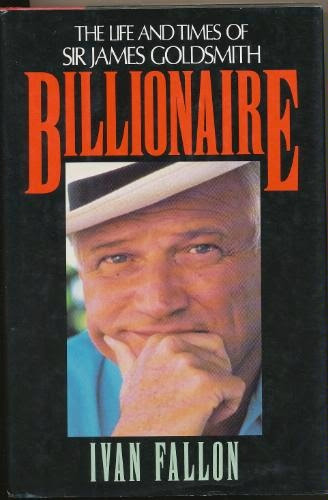


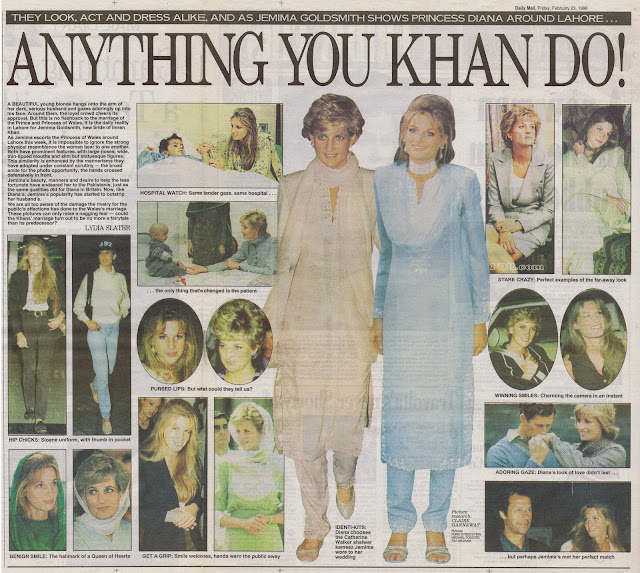
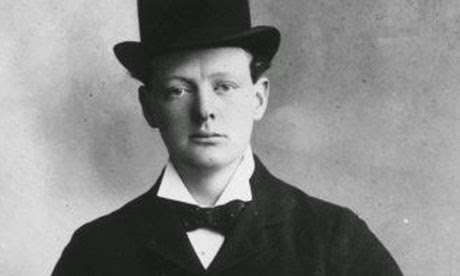

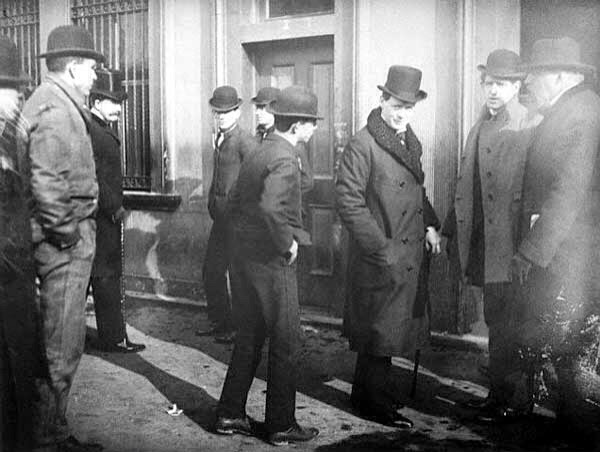
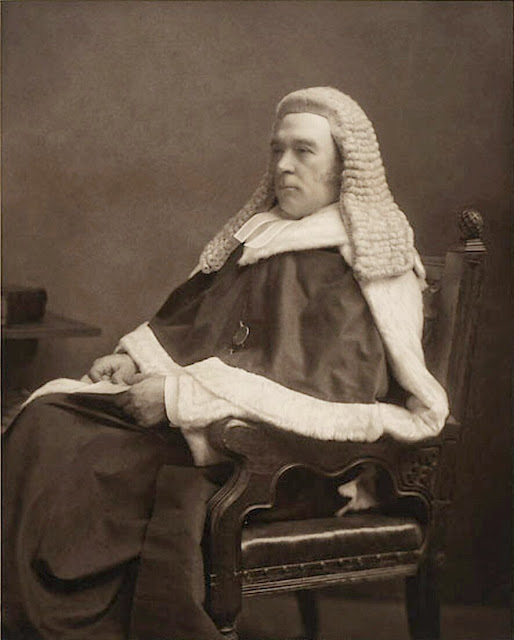
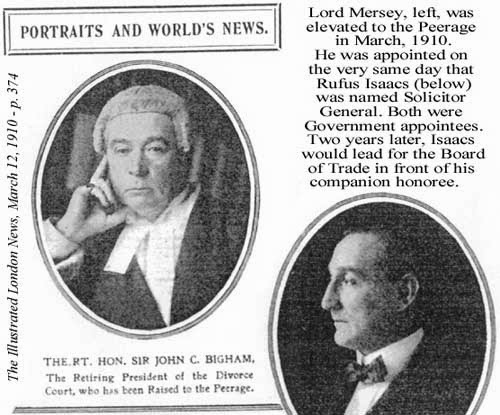
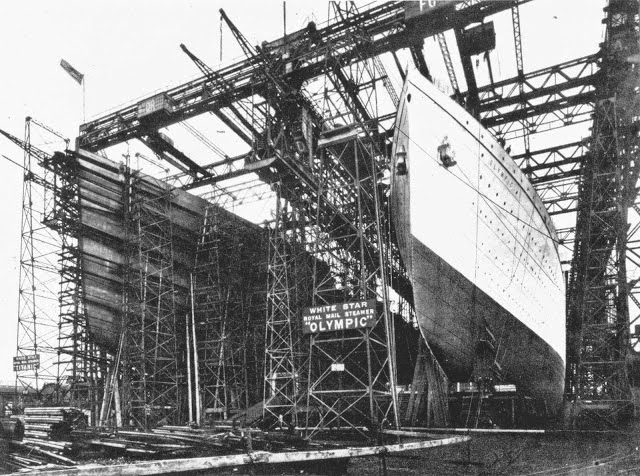
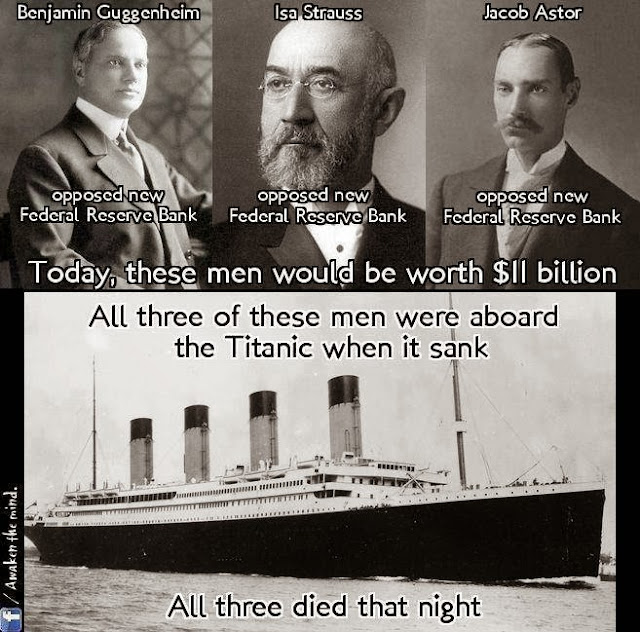
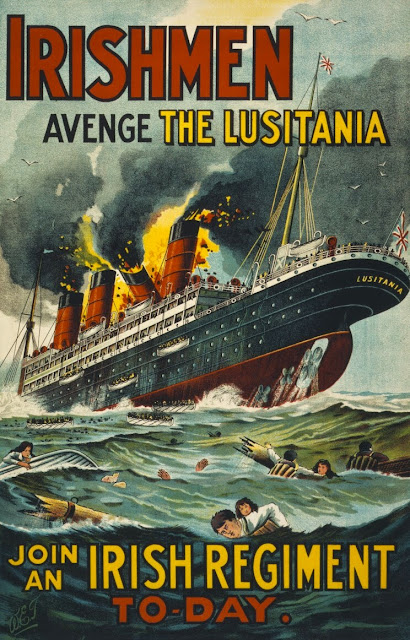
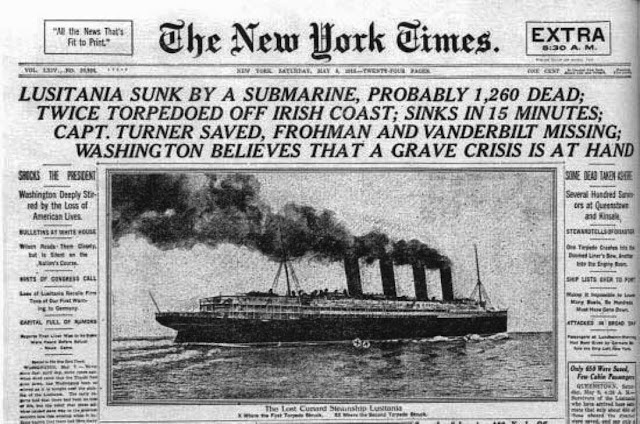
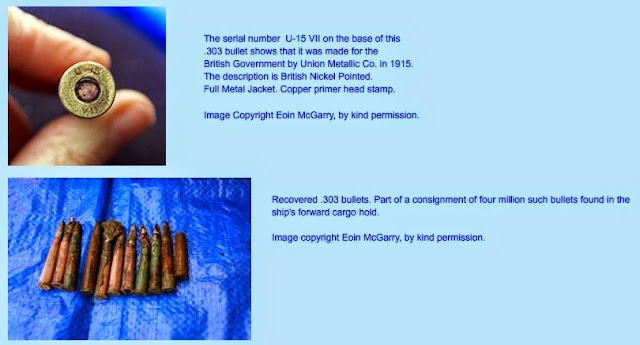
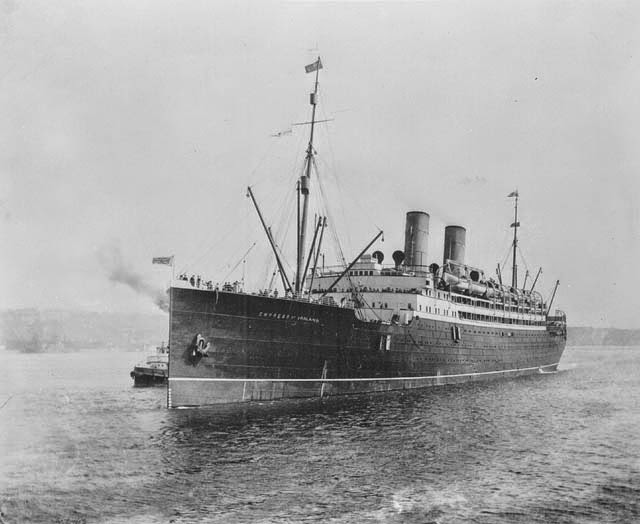
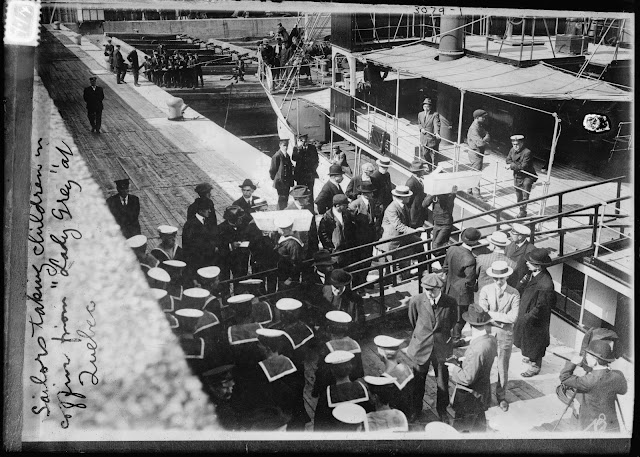
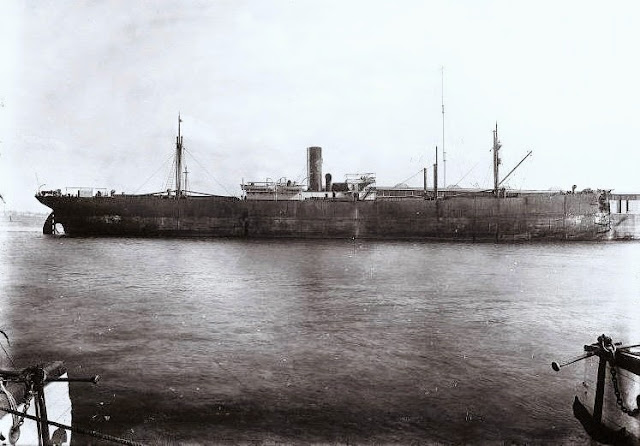

%2C_-_Vanity_fair_nov_19_1887.jpg)

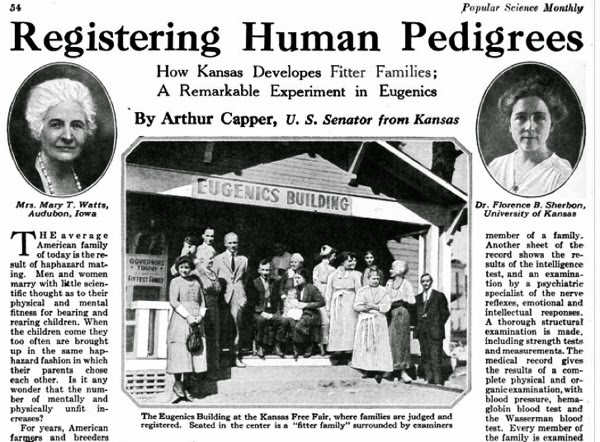
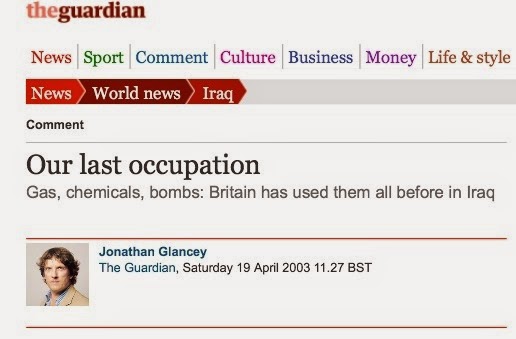
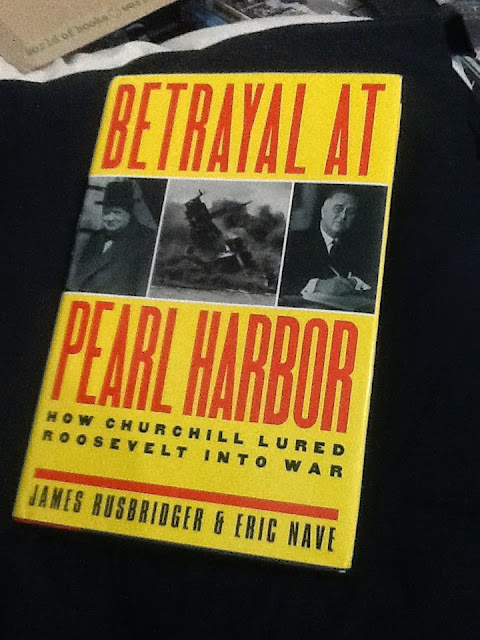


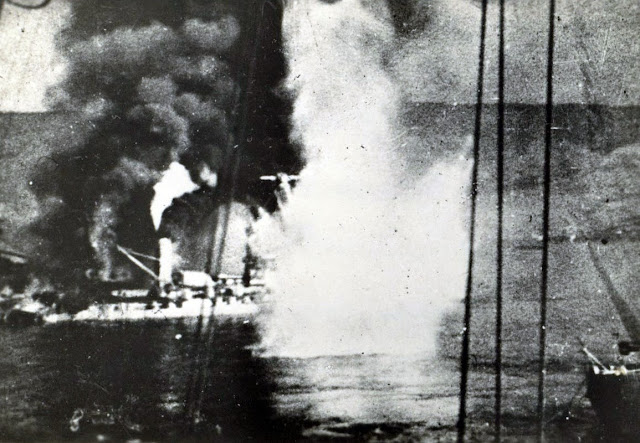




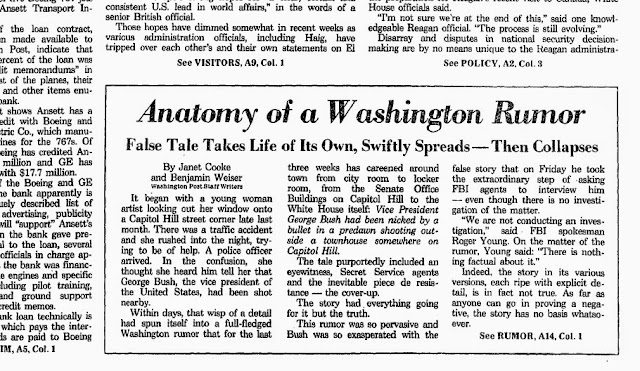




.jpg)


_tn.jpg)



